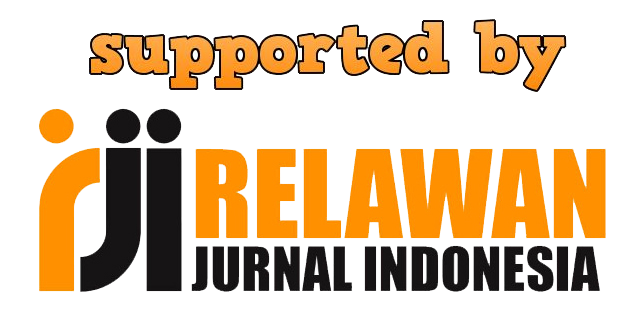THE THIN LINE BETWEEN FUNNY AND DISRESPECTFUL: MEDIA FRAMING ON PRABOWO’S ”BOYOLALI FACE” REMARK
DOI:
https://doi.org/10.23887/jish-undiksha.v10i1.32211Keywords:
Indonesian Presidential Election, Framing, Image ConstructionAbstract
The 2019 Indonesian Presidential Election is a democratic process for electing the President and Vice President of the Republic of Indonesia for the 2019-2024 period. Before the election was held, Indonesia's mass media was incessantly publishing news about presidential candidates, namely Joko Widodo and Prabowo Subianto Djojohadikusumo. As a retired army lieutenant general, Prabowo is known as a nationalist figure. This research aims to study Prabowo's image just before the 2019 Election in the online version of print media. We examine and compare the construction of Prabowo's image carried out by Tempo.co and Republika.co.id. We purposively select news published in Tempo and Republika online version from 4 to 5 November 2019. This research uses the qualitatively framing method by Entman to answer how the mass media carry out image construction. Results indicate that both media carry out a difference between construction. If Tempo tends to construct Prabowo's image as disrespectful, Republika tends to construct Prabowo's image as funny regarding Prabowo's "Boyolali Face" Remark. This study concludes that there are differences between the mainstream mass media and Islamic mass media in constructing Prabowo's image through their news. The different images constructed by the two media indicate that news construction or news framing is inevitable in the journalism field.
References
Abdul Rani, U., Hamdani, M. S., & Azman, S. (2020). Disputes between US vs Iran regarding nuclear issues: Harian analisa coverage, Indonesia. Utopia y Praxis Latinoamericana, 25(Extra 6), 71–80. https://doi.org/10.5281/zenodo.3987572
Anggoro, A. D. (2019). Kata kunci : Media, Politik dan Kekuasaan. 2(2), 25–52.
Aniatsari, I., Muhaemin, E., & Eif Saiful Amin Dang. (2018). Pemberitaan Konflik FPI dan GMBI pada Pikiran Rakyat, Republika dan Tribun Jabar. 3, 46–66. Retrieved from https://jurnal.fdk.uinsgd.ac.id/index.php/jurnalistik
As’ari, A. J. (2016). Analisis framing pemberitaan pilkada kaltim di surat kabar kaltim post dan tribun kaltim edisi 11 Mei 2013. EJournal Ilmu Komunikasi, 3(4), 200–214. https://doi.org/10.1017/CBO9781107415324.004
Bolsen, T. (2011). The construction of news: Energy crises, advocacy messages, and frames toward conservation. International Journal of Press/Politics, 16(2), 143–162. https://doi.org/10.1177/1940161210392782
Borah, P. (2011). Conceptual Issues in Framing Theory: A Systematic Examination of a Decade’s Literature. Journal of Communication, 61(2), 246–263. https://doi.org/10.1111/j.1460-2466.2011.01539.x
Bowe, B. J., Gosen, J., & Fahmy, S. (2019). Personal Choice or Political Provocation: Examining the Visual Framing and Stereotyping of the Burkini Debate. Journalism and Mass Communication Quarterly, 96(4), 1076–1098. https://doi.org/10.1177/1077699019826093
BPN Klarifikasi Soal Pidato Prabowo 'Tampang Boyolali'. (2018). Republika. Diambil dari: https://www.republika.co.id/berita/nasional/politik/18/11/04/phoeni377-bpn-klarifikasi-soal-pidato-prabowo-tampang-boyolali
Cacciatore, M. A., Scheufele, D. A., & Iyengar, S. (2016). The End of Framing as we Know it … and the Future of Media Effects. Mass Communication and Society, 19(1), 7–23. https://doi.org/10.1080/15205436.2015.1068811
Creswell, J. W. (2009). Research Design Qualitative, Quantitative, and Mixed Methods Approaches (p. 296). p. 296. California: SAGE Publications, Inc.
Entman, R. M. (1993). Framing: Toward clarification of a fractured paradigm. Journal of communication, 43(4), 51-58.
Eriyanto. (2011). Analisis Wacana: Pengantar Analisis Teks Media. Yogyakarta: LKiS Group.
Harrington, D. W., Elliott, S. J., & Clarke, A. E. (2012). Frames, claims and audiences: Construction of food allergies in the Canadian media. Public Understanding of Science, 21(6), 724–739. https://doi.org/10.1177/0963662510393083
Husband, C. (2017). Framing inclusive journalism: Between necessary idealism and essential realism. Journal of Applied Journalism & Media Studies, 6(3), 425–442. https://doi.org/10.1386/ajms.6.3.425_1
Jenkins, H. (2006). Convergence Culture. In New York University Press. https://doi.org/10.1002/9781405165518.wbeos1270
Mahfud, C. (2014). Ideologi Media Islam Indonesia Dalam Agenda Dakwah: Antara Jurnalisme Profetik Dan Jurnalisme Provokatif. Jurnal Dakwah, 15(1), 1–18.
Meeks, L. (2020). Defining the Enemy: How Donald Trump Frames the News Media. Journalism and Mass Communication Quarterly, 97(1), 211–234. https://doi.org/10.1177/1077699019857676
Ribuan Orang Protes Candaan Prabowo Soal Tampang Boyolali. (2018). Tempo. Diambil dari: https://nasional.tempo.co/read/1142969/ribuan-orang-protes-candaan-prabowo-soal-tampang-boyolali
Saidin. (2020). Prinsip Bad News is Good News dalam Konstruksi Pemberitaan Koran Berita Kota. Prosiding Komunikasi, Pembangunan Dan Media, 124. Retrieved from http://www.elsevier.com/locate/scp
Saputra, E., Syahputra, I., & Setyo, B. (2020). Pemberitaan Media Online: Studi Kasus Konflik Budaya “Sedekah Laut” Di Pantai Baru, Ngentak, Bantul, Yogyakarta. Jurnal Ilmu Sosial Dan Humaniora, 9(2), 175. https://doi.org/10.23887/jish-undiksha.v9i2.17542
Sari. (2012). Analisis Framing Berita Headline Freeport Di Harian Kompas. Universitas Hasanuddin.
Schudson, M. (2000). The Power of News. In Harvard University Press. https://doi.org/10.1136/bmj.l4426
Setiawan, A., & Daisy adela, B. (2020). Discourse Analysis of PB Djarum vs KPAI Polemic Reported by 3 Mass Media (CNN Indonesia, Detik, and Kompas.com) During the Period of September – October 2019. Jurnal Ilmu Sosial Dan Humaniora, 9(1), 131. https://doi.org/10.23887/jish-undiksha.v9i1.24717
Speakman, B., & Funk, M. (2020). News, Nationalism, and Hegemony: The Formation of Consistent Issue Framing Throughout the U.S. Political Right. Mass Communication and Society, 23(5), 656–681. https://doi.org/10.1080/15205436.2020.1764973
Svetlana, R. (2019). Synergetics of mass media culture and trends of postmodernism in the modern information space of Russia. Utopia y Praxis Latinoamericana, 24(Extra5), 399–408.
Tampang Boyolali; di Antara Dugaan Politisasi dan Gurauan Prabowo. (2018). Tempo. Diambil dari: https://fokus.tempo.co/read/1143226/tampang-boyolali-di-antara-dugaan-politisasi-dan-gurauan-prabowo/full&view=ok
Tampang Boyolali, Ejekan atau Candaan?. (2018). Republika. Diambil dari: https://www.republika.co.id/berita/nasional/news-analysis/18/11/05/phpjol428-tampang-boyolali-ejekan-atau-candaan
Trimithiotis, D. (2020). The Persistence of Ethnocentric Framing in Online News Coverage of European Politics. Digital Journalism, 8(3), 404–421. https://doi.org/10.1080/21670811.2019.1598882
Vu, H. T., & Lynn, N. (2020). When the News Takes Sides: Automated Framing Analysis of News Coverage of the Rohingya Crisis by the Elite Press from Three Countries. Journalism Studies, 21(9), 1284–1304. https://doi.org/10.1080/1461670X.2020.1745665
Downloads
Published
Issue
Section
License
Authors who publish with the Jurnal Ilmu Sosial dan Humaniora agree to the following terms:
- Authors retain copyright and grant the journal the right of first publication with the work simultaneously licensed under a Creative Commons Attribution License (CC BY-SA 4.0) that allows others to share the work with an acknowledgment of the work's authorship and initial publication in this journal.
- Authors are able to enter into separate, additional contractual arrangements for the non-exclusive distribution of the journal's published version of the work (e.g., post it to an institutional repository or publish it in a book), with an acknowledgment of its initial publication in this journal.
- Authors are permitted and encouraged to post their work online (e.g., in institutional repositories or on their website) prior to and during the submission process, as it can lead to productive exchanges, as well as earlier and greater citation of published work. (See The Effect of Open Access)


.png)
.png)













